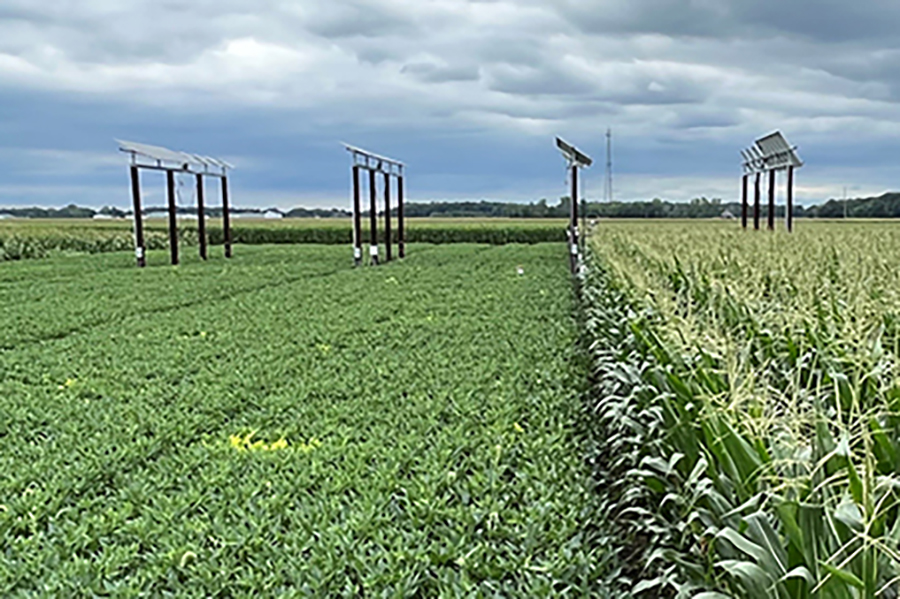Purdue agrivoltaic farming structures and software harvest solar power more efficiently

Innovative modules are mojunted low and rotate to allow farm equipment to pass
Purdue University researchers have improved upon traditional solar energy structures used in agrivoltaic farming, a sustainable system that generates electricity from the sun while row crops like corn, rice, soybeans and wheat concurrently grow on the same land.
The patent-pending Purdue structures and software optimize food production for farmers and maximize solar energy production. Research about the improved agrivoltaic panels was published in the January 2023 issue of the peer-reviewed IEEE Journal of Photovoltaics. It also has been published in the Journal of Photovoltaic Technology and Nature Sustainability and presented at IEEE Photovoltaic Specialists conferences.
Traditional agrivoltaic structures cast shadows, decreasing crop yield. These structures are also incompatible with large-scale agriculture because they are mounted high to allow farm equipment to freely move around them. This requires a deeper foundation, which dramatically increases the cost. The Purdue modules are mounted much lower, which makes the system more affordable and decreases the time needed for a return on investment.
Muhammad Ashraful Alam, the Jai N. Gupta Professor of Electrical and Computer Engineering, said the Purdue agrivoltaic structures can be implemented for full-scale farming and use current farm equipment.
“The system is designed with row crops in mind like corn, soybeans, wheat and rice,” Alam said. “The dimensions of these structures have been fine-tuned to allow sunlight, rain and shadows to reach plants as needed. They also withstand harsh weather conditions including heavy rain and strong wind.”
